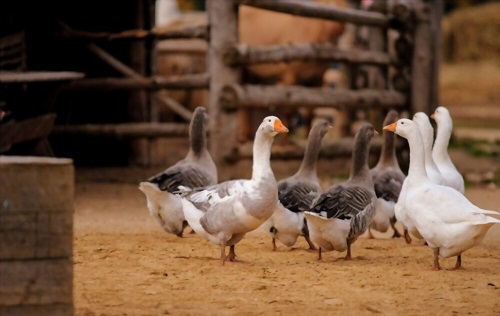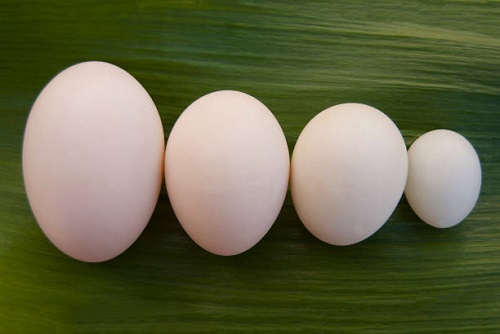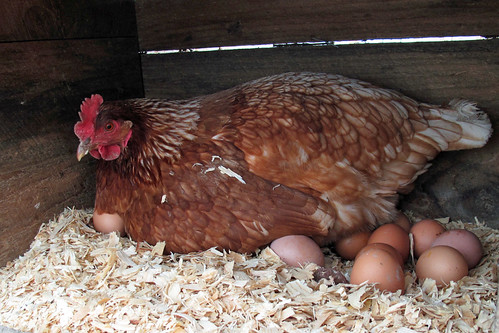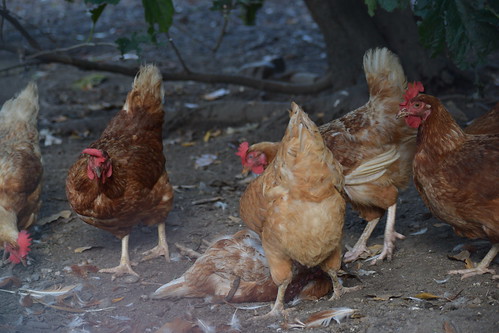Are you thinking about starting the duck and geese farming business? It’s a business that comes with a few challenges. However, if you’re up for the challenge, it can be very rewarding. This beginner guide will tell you what duck and geese farming is, the benefits it offers, some of the challenges you might face when starting your business, and how to get started.
What is Duck and Geese Farming?
Duck and geese farming is the production, raising or keeping of ducks and geese like other domestic poultry birds such as chickens. Goose offers animal products such as meat, feathers, eggs and fat, which transform it into a highly coveted and profitable poultry enterprise.
Geese and ducks are raised for meat and egg production purposes. However, geese are more easily and profitably grown than ducks, owing to the fact that they (geese) subsist very largely on grass and other tender green food during the growing season. For this reason, it is essential to have abundant pasture. Low rough land is sometimes provided but some that are high and well-drained should be available when they wish to get away from the dampness.
Breeds of Ducks and Geese
There are many different breeds of ducks and geese, each with its own unique characteristics. There are also breeds of domestic ducks and geese.
Breed of Domestic Ducks
You can read about the breeds of ducks listed above here.
Breed of Domestic Geese
You can read about the breeds of geese listed above here.
Getting Started and Tips for Success
Where you purchase your ducklings or goslings will depend on what is available to you locally. In general, you can find these birds at the same places you would purchase chickens – either directly from the hatchery or through dedicated chick vendors. If you have a preference for one sex over the other, you can usually request sexed birds. However, it is important to note that straight-run birds (those that have not been sexed) are usually cheaper to purchase. For most small-scale farmers, a mixed group of ducks or geese will be sufficient for meat production. In general, the males of these species will be larger than the females, so they will provide a larger portion of meat.
If you are interested in breeding ducks and geese, you may want to consider sexing them in order to maintain a proper ratio of males to females. One drake will typically breed with five to six females, while most ganders will only breed with one or two.
When buying ducklings and goslings from the hatchery, be sure to ask about the delivery or collection date. Newly hatched ducklings and goslings can safely be shipped as long as they are well packaged securely in cardboard boxes with enough air holes for ventilation. They can also go without food for up to two days, as after hatching they still have some of the egg yolks in their bodies, which serves as a food source.
Ducklings or goslings are purchased in the same places as chickens: directly from the hatchery or through feed stores. They will come in a straight run (both sexes), or they can be sexed if you want to have more of one sex. Generally, a straight run will be a few cents cheaper to purchase than those segregated by sex. For the average small-scale farmer, a straight run will be satisfactory for ducks or geese raised for meat. Males generally will be heavier than females. If you want to breed ducks and geese, you may want them sexed so you can have a proper ratio of males to females. One drake will breed five to six females. Most ganders will only breed with one or two females.
When purchasing your ducklings and gosling directly from the hatchery, ask when they will be mailed. It is safe to ship newly hatched waterfowl, as long as they are properly packaged in sturdy cardboard containers with plenty of air holes. They can go without food for a day or two while being shipped, as after hatching they retain part of the yolk from the egg in their body. This will give them a food source.
Ensure that you are available or someone is available to take delivery of the young birds on the day of their arrival. If this is not possible, make arrangements with the hatchery or post office to hold the package until you can pick it up. When they arrive, open the boxes and check on the health of the young waterfowl. The ducklings and goslings should be active and alert, with no discharge from their eyes or nose. Checking under their tails can help to ensure that the cloaca area is clean and free of any fecal matter. If all appears well, allow them to rest and acclimate to their new surroundings for a few hours before letting them out into their new home.
It is recommended that ducklings and goslings be raised separately due to the goslings’ larger size. However, the general care for both species is similar, so the information provided in this guide applies to both.
Preparing for new Ducklings and Goslings
Before purchasing any new ducklings or goslings, you should set up a suitable brooding pen for them with appropriate feeders and waterers. The pen should be located in a draft-free building with good ventilation and lighting, and there should be 6 inches of space per bird. Once the birds are 2 weeks old, you can increase the space to 1 foot per bird to accommodate their growth.
The floor of the brooding pen should be covered with absorbent litter material. At least four inches of wood shavings, chopped straw, peat moss, rice husk or peanut hulls should be used. The litter will need to be maintained to prevent it from being wet or smelling. Remove wet, cakey or smelling litter from the house and replace it with fresh, dry litter.
The temperature within the brooding house should be between 85-90oF. The temperature should be reduced by 5oF each week until it is 70oF. By the sixth week, the birds should be fully feathered and will need no supplemental heat. Ensure the ducklings or goslings are very near to the heat source (brooders), feeders, and drinkers or waterers for the first 2-3 days after arrival.
It is important to closely observe the birds determine if the heat needs to be adjusted. If the birds avoid the heat source and are lingering at the edges of the pen, this suggests that the heat or temperature is too much and you will need to reduce the heat. On the other hand, if the birds are huddled under the heat source, this indicates that the heat source is low and the heat should be increased by adding extra brooders.
The drinkers or waterers should be filled with water and multivitamins before the ducklings and goslings arrive when the birds arrive. You should also give oral antibiotics plus vitamins via drinking water to the birds for the first 5-7 days.
Avoid using an open pan or bowl to provide water for young ducklings or goslings. They may mistakenly fly into the water and get drowned or become wet. Since their body is not covered with real feathers but down, getting wet would allow them to become chilled. This could lead to hypothermia and die after. This is why it is why fountain drinkers or nipple drinkers are recommended for chicks, poults, ducklings and goslings.
Do not allow young ducks or geese to have access to swimming water, as their feathers are not yet fully developed and thus they will not be protected from the cold. In addition, do not leave them outside in the rain as they could die of hypothermia.
If the ducklings or goslings have been hatched by a mother duck or goose, they can have access to swimming water with the adults because the mother will not allow them to stay in the water for an extended period of time, and she will protect them from the rain. By 4-5 weeks, the ducklings or goslings will have feathers and will be able to withstand most weather conditions. Goslings can be placed on pasture around 6 weeks of age in good weather.
Also Read: Brooding in Poultry – Definition, Types & How to Brood
Feeding of Ducks and Geese
A quality starter feed is essential for young goslings and ducklings to get off to a healthy start. These birds are generally quite resistant to disease, so there is no need for a medicated feed. In fact, certain medications often found in chick starters can cause serious health problems in these birds.
At four weeks old, you can start to supplement their diet with cracked corn, and then transition them to a grower ration. You can also begin feeding them small amounts of fresh growing grass or fresh clippings starting the first week of their life.
A plot of pasture is a great source of feed for ducklings and goslings starting from when they are 6 weeks old. Ducks and geese really like feeding on both plants and insects. If you have an acre of pasture, it is enough for 40 ducks and 20 geese. It is important to note that geese require more space than ducks because of their large body size and will quickly deplete the grasses and legumes in a smaller pasture.
By the time goslings are 6 weeks old, they can mostly subsist on forage, as long as the grasses and legumes in the pasture are succulent. Drinkable water should be constantly available for the geese and ducks, along with the water for them to bathe.
If you have fewer than 10 birds, you can provide them with drinking and bathing water using a hose or small children’s pool. This will need to be cleaned and refilled twice daily. If you have more birds, it is best to provide them with separate drinkers and bathing tubs. A small pond can be used for bathing, but too many ducks or geese can quickly damage the banks.
If you plan to slaughter your geese or ducks for home use or sale, you should start feeding them a turkey finisher feed one month before selling or slaughtering them. This will give them extra nutrients and help them fatten up before slaughter. Birds that are not going to be slaughtered do not need to be fed a finishing ration.
Health Management of Ducks and Geese
It is important to take measures to protect your waterfowl from infectious diseases. One way to do this is to limit their contact with wild birds, which can carry viruses and bacteria. Another way is to keep your birds’ environment clean and free of droppings.
Their feed and water must also be kept away from dirt and fecal droppings. If feeders or drinkers become contaminated with the birds’ droppings, washing with soap and disinfectant will help kill disease organisms. Allow the feeders and drinkers to dry before using them to serve the birds with feed and water respectively.
If you are planning to pasture your flock, ensure that there is sufficient ground space for the birds. Overpopulating pens and pastures create an environment where disease-causing organisms in feces can proliferate. Rotating pastures by using small paddocks can be advantageous in two ways: Fecal matter will be able to dry out, and the action of sunlight can kill many disease-causing organisms. Additionally, it will give the plants in the pasture a chance to regrow.
Diseases of Ducks and Geese
Geese are naturally resistant to disease, but it is still important to provide them with a balanced diet and good hygiene to prevent the spread of illness. Taking preventive measures is the best way to avoid disease altogether.
Some of the common diseases of ducks and geese are as follows:
- Derzsy disease
- Fowl cholera
- Avian influenza (Bird flu)
- Botulism
- Chlamydiosis
- Fowlpox
- Salmonellosis
- Infectious hepatitis
- Intestinal parasites
- Coccidiosis
- Aspergillosis
Free Geese Farming Ebook
If you need detailed information on how to start geese farming, you can download this geese farming book for free.




thanks